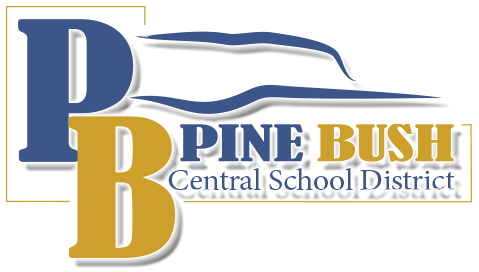2020 5632
Non-Instructional/Business Operations
SUBJECT: PEST MANAGEMENT AND PESTICIDE USE
The Board is committed to maintaining the integrity of school buildings and grounds while protecting the health and safety of students and staff and maintaining a productive learning environment.
Structural and landscape pests can pose significant problems for people and property. Weeds and infestations can destroy playing fields and playgrounds and more importantly, cause severe allergic reactions. Pesticides can pose risks to people, property, and the environment. It is therefore the policy of the District to incorporate Integrated Pest Management (IPM) procedures for control of weeds, structural, and landscape pests. The objective of this program is to provide necessary pest control while using the least toxic approach to all pests, weeds, and infestations.
Pest/Pesticide Management Plan
The District will manage weeds and pests to:
- Reduce any potential human health hazard or threat to public safety;
- Prevent loss or damage to school structures or property;
- Prevent pests from spreading into the community, or to plant and animal populations beyond the site; and
- Enhance the quality of life for students, staff, and others.
Integrated Pest Management (IPM) Coordinator
An IPM Coordinator will be appointed by the Superintendent. The Coordinator will be responsible for implementing the IPM policy and plan. The coordinator’s responsibilities will include, but are not limited to, the following:
- Recording all pest sightings by school staff and students;
- Recording all pesticide use and utilizing the least toxic approach;
- Meeting with a local pest control expert, such as a pesticide contractor to share information on what pest problems are present in the school;
- Ensuring that all of the expert’s recommendations on maintenance and sanitation are carried out where feasible;
- Ensuring that pesticide use is done when school is not in session or when the area can be completely secured against access by school staff and students for a standard 72 hours, or as required by the pesticide being used;
- Evaluating the school’s progress in the IPM plan; and
- Notifying parents, staff and neighbors of any applications of pesticides 48 hours before they occur. The IPM Coordinator will serve as the District’s Pesticide Representative.
Pesticide Use on Common Areas
Pesticides will not be used on playgrounds, turf, athletic or playing fields, in effect, all lawn areas of the school. In these common areas where children gather and play, pesticide alternatives will be used whenever possible and effective. The prohibition does not apply to indoor use or the application to building structures.
An exception may be made for emergency applications of pesticide only when approved in advance by the Board. The Board may consult with the local Health Department on public health related emergency determinations. They may also consult with the Department of Environmental Conservation (DEC) for environmental emergency determinations. Emergency determinations should only be sought for one-time pesticide application in a specific situation, which presents a true emergency. The guidance document from DEC provides clarification on emergency determinations and can be found on the official website of the DEC.
Some types of pesticides and alternatives, those deemed safe in federal regulation, may be allowable on playing fields and playgrounds in certain circumstances. The District will develop regulations governing the use of pesticides and their alternatives on school grounds.
Fertilizer Use
Phosphorous fertilizers will only be used on school grounds in compliance with the following requirements:
- Fertilizer use is prohibited between December 1 and April 1 annually.
- The use of fertilizers is prohibited within 20 feet of any surface water except: 1. Where a continuous natural vegetation buffer, at least ten feet wide, separates lawn and water. 2. Where a spreader guard, deflector shield or drop spreader is used, then the application may not occur within three feet of any surface water.
- The use of phosphorus fertilizers is prohibited on lawns or other non-agricultural turf with the following exceptions:
1. The use of phosphorus fertilizers is needed to establish a new lawn; or
2. A soil test shows that phosphorus fertilizers are needed for growth. - Fertilizer cannot be used on any impervious surfaces and if such an application occurs, it must be cleaned immediately and legally applied or placed in an appropriate container.
Notification
The District’s IPM Coordinator or designated Pesticide Representative will give prior written notice of all pesticide applications to anyone who has asked to receive this notice. The District will also notify parents, students, and staff of periodic pesticide applications. The District will maintain a list of those people who wish to receive 48 hour notice before pesticide applications and will ensure that a system is developed to deliver such notice in a timely fashion to all affected. The notification system may be by mail or email, and will ensure that a back-up method is available to notify those for whom the regular system is unworkable. The name and contact information for the District Pesticide Representative will be made available to all requesting it.
The District must also provide additional written notification to all parents and staff three times per year to inform them of any pesticide applications that have occurred: within ten days of the end of the school year, within two school days of the end of winter recess and within two days of the end of spring recess.
Recordkeeping
Records of pesticide use will be maintained on-site for three years and will be completed on the day of pesticide use. In addition, pest surveillance records will be maintained to help verify the need for pesticide treatments. Annual reports of any applications must be sent to DEC.
- Education Law §§ 409-k, 409-h
- Environmental Conservation Law §§ 17-2103, 33-0303
- 40 CFR Part 152.25
- 7 USC § 136(mm), 136q(h)(2) (FIFRA)
- 8 NYCRR Part 155.4(d)(2)
Adopted: 8/24/11
Revised: 9/22/20
